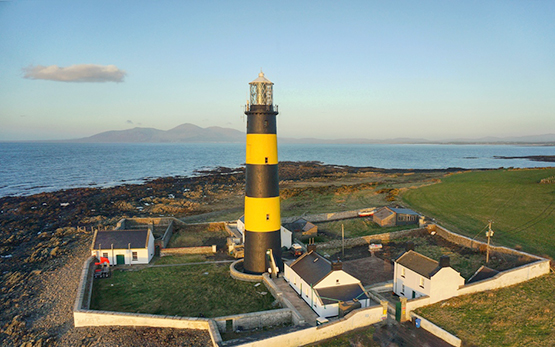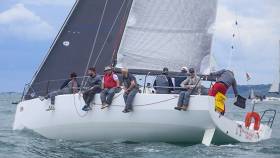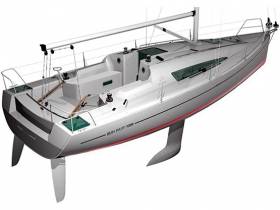Displaying items by tag: Rockabill VI
Royal Irish Yacht Rockabill VI Makes Great Start To Calves Week
GAS Calves Week 2016 started today with a final fleet of 73 cruisers in 6 fleets presenting for the racing arranged once again by Principal Race Officer Neil Prendiville and team. With an increased UK presence and new boats travelling from harbours around the Irish coast, the four–day Regatta, already an established event on many cruisers' annual calendar, has extended its reach.
After the heavy rain of the previous day, the conditions and visibility had improved considerably. Despite this, a number of the lead boats had to rely on GPS to locate the pre-positioned windward mark to the south of Long Island in the middle of Roaringwater Bay. The fleets started outside Copper Point and sent on a long windward beat and then around the Calf Islands once, twice or three times. Given the light wind conditions, varying between 6 and 14 knots, and between W and WNW as the race proceeded, a heavy swell and the flooding tide, tactical positioning counted heavily for those in a position to feature in the places. Honours were spread fairly evenly between clubs sending representatives.
Paul O'Higgins (RIYC) in his new JPK 10.80 Rockabill VI secured honours in both Class 0/1 IRC and ECHO in these difficult conditions, ahead of two Royal Cork boats, True Penance (Darrer/Garvey) in IRC and Altair (Dorgan/Losty) in ECHO. RCYC however swept honours in Class 2, with J80 Rioja (Baxter/Dillon) winning ECHO honours ahead of Galway Bay's Rob Allen on Smile, but losing out to fellow Crosshaven skipper Frank Desmond on his Sunfast 32, Bad Company.
RCYC also took IRC honours in Class 3 with the Lane/Enright partnership on J24 YouGottaWanna, edging out Tralee Bay's Boojum, the Sigma 33 of David Buckley. Local boats featured in the ECHO contest, with the Quinlan consortium on Quinsea (SHSC) winning the honours ahead of John Molloy's Holland 25, Manzanita. In Class 4 IRC, local boat, Sadler 32 Raffles (Tom Kirby/Sean Norris) was ahead of Kinsale Yacht Club Saoirse with Richard Hanley. In ECHO, however, Kirby and Norris had to settle for second place behind local rivals, O Buckley on Tete a Tete (SHSC).
In the hotly contested Whitesail categories, the conditions suited Bob Rendell's XC45 Samatom (HYC) ahead of Sean O'Riordan's YDream (KYC) in IRC. Brian Heffernan on Aisling (RCYC) took ECHO honours ahead of Dublin based Philip Smith on Just Jasmine (RIYC). In Whitesail 2, which is ECHO only, Kinsale Yacht Club shared the honours with Stephen Lysaght's Reavra ahead of John O'Regan on Main 4.
Up–Down Round Ireland Race Sees Battle Of The Bulge
Day 4 1800 An intriguing Round Ireland Race tussle has been taking place this afternoon and evening along Ireland’s most easterly coastline where County Down bulges out towards both Galloway in Scotland and the Isle of Man in the middle of the Irish Sea writes W M Nixon.
Four boats – three Irish, one French – have been trying to trade places in the southwest to south winds as they dodged the north-going ebb tide across the mouth of Belfast Lough, and then rock-hop on down the outer coastline of the Ards Peninsula and beyond to where – well south of the entrance to Strangford Lough – the bulge comes to a sudden stop at St John’s Point with its very conspicuous lighthouse.

Sentinel of the East Coast – St John’s Point in County Down with the Mountains of Mourne beyond
There are of course many more than just four boats in the area as the Volvo Round Ireland Race 2016 continues on its way. And far to the north, there are other boats which have been hung up in the strongest tides in the Rathlin Island area, and they probably deserve a report to themselves. But really, all they’ll want to do is get on with it again as the tide finally turns again in their favour around 1900hrs.
At this stage of the race, however, followers of the fleet have identified these four particularly interesting crews and boats of broadly comparable size still racing. And in these final stages of the biggest Round Ireland Race ever, it’s fascinating for race addicts to see how they play their hands as the game draws to a close.
The four boats, with their IRC ratings in brackets, are Paul O’Higgins new JPK 10.80 Rockabill VI (1.046), Dave Cullen’s J/109 Euro Car Parks (1.016), Patrice Carpentier’s Sunfast 3200 GROUPE 5 (0.995), and Stephen Quinn’s J/97 Lambay Rules (0.971).
In terms of distance from the finish they’re widely spread, as Rockabill is 58 miles from Wicklow, Euro Car Parks is 67, Groupe 5 is at 80 miles, and the smallest one, Lambay Rules, is 102. Thus it must hardly seem a race at all to anyone accustomed to the One-Design scene. But believe me, there’s a ding-dong going on out there, and from now to the finish at Wicklow some time tomorrow, it’s neck-and-neck on the figures, even if they’re barely in sight of each other.
Currently in the overall placings, allowing for the fact that both Rambler 88 (George David) and Teasing Machine (Eric de Turckheim) are well finished in first and second and secure in their placings, this Battle of the Bulge has GROUPE 5 in third overall, Euro Car parks is fourth, Lambay Rules is sixth, and Rockabill VI is seventh.
Out in a race of her own well to the south is the fourth-placed boat, Michael Boyd’s much larger First 44.7 Lisa. But although Lisa has been milling her way at a fine pace towards the finish line all through the afternoon, at a position 7 miles east of the Baily on Dublin Bay she is about to run out of favourable tide with 22 miles still to sail to the finish. And though the M2 weather-buoy ten miles to the eastward is still showing 12 knots of good southerly breeze, inevitably Lisa’s crew are going to have a difficult evening of it with a foul tide and winds all over the place off Wicklow itself.

By contrast, the smallest boat in our select group, Stephen Quinn’s Lambay Rules (pictured above), is off the southeast corner of Belfast Lough, and the new flood tide which is going to hinder Lisa in St George’s Channel will be a favourable tide for Lambay Rules. It will give her a mighty push through the remainder of the North Channel and out into the Irish Sea, where her three closest rivals are already working on tactical decisions which will stay with them for the remainder of the race.
Leader of the pack Rockabill VI is close-hauled on port well off Carlingford Lough, hanging in very well with Chris and Patanne Power Smith’s J/122 Aurelia, which is tough on Aurelia but good news for Rockabill. Next in line is Euro Car Parks, which hugged the coast more on the leg from South Rock Light to St John’s Point, but is now striking out in open water in some style, though on the 1800hrs fix, Rockabill is shown as slightly faster.
Early in the afternoon. Patrice Carpentier on the two-handed GROUPE 5 became disenchanted with staying with the rest of the fleet as they held close along the shore from the South Rock to St John’s. So he took what now looks like a flyer on starboard, but it may have been a good one, as he’s back on port and making a useful 6.2 knots.
GROUPE 5’s low rating puts her very much in the frame, as too does the even lower rating of Lambay Rules which is currently off Ballywalter showing only 4.9 knots over the ground, as the tide has still to turn. It’s very much Game On for a long night. We’ll take up the story again with our next report in the morning.
See Round Ireland tracker here and keep to up to date with the fleet's progress with Afloat's regular Round Ireland 2016 updates here

























































